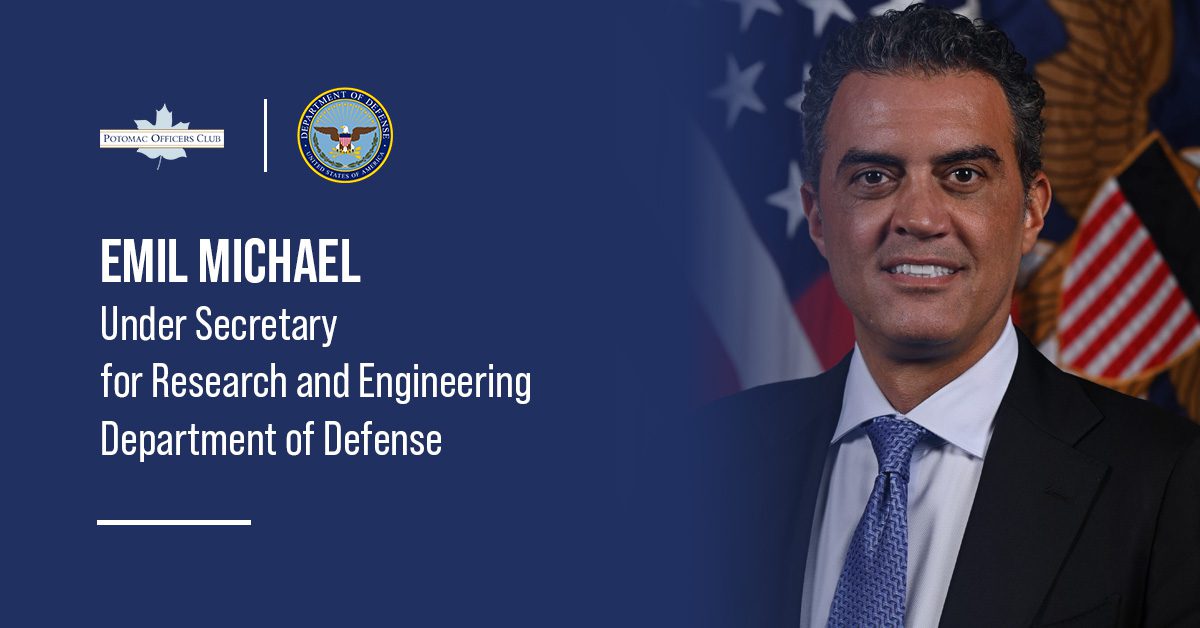
Pentagon’s AI Transition Puts Emil Michael on 120-Day Clock for Advana, Maven Path Forward
The Department of Defense has placed its two flagship artificial intelligence platforms — Advana and the Maven Smart System — under new scrutiny, giving Under Secretary of Defense for Research and Engineering Emil Michael 120 days to present a recommended path forward for both, Breaking Defense reported.
The directive, issued Aug. 14 by Deputy Secretary of Defense Stephen Feinberg, also transfers authority of the Chief Digital and AI Office from the deputy secretary’s office to USD(R&E). While Pentagon officials insist the move will not add bureaucracy, former defense leaders say it risks signaling a deprioritization of AI just as adversaries accelerate their battlefield use of autonomy.
“This realignment is the next step in making a uniform, AI-first push for the Department of Defense,” a defense official told reporters. “By aligning the CDAO under the USD(R&E), we create a powerful innovation engine that can deliver AI superiority from laboratory to battlefield.”
 Join Navy Chief Technology Officer Justin Fanelli and Chief Data and AI Officer Stuart Wagner as they discuss how the Navy is integrating generative AI into its capabilities in a panel session at the 2025 Navy Summit — this Tuesday, Aug. 26! Save your spot for the Potomac Officers Club event.
Join Navy Chief Technology Officer Justin Fanelli and Chief Data and AI Officer Stuart Wagner as they discuss how the Navy is integrating generative AI into its capabilities in a panel session at the 2025 Navy Summit — this Tuesday, Aug. 26! Save your spot for the Potomac Officers Club event.
But several former officials see a different message. Retired Air Force Lt. Gen. Jack Shanahan, who led Project Maven and the Joint AI Center (a predecessor to CDAO), told Breaking Defense that the move could be read as a demotion for AI.
“An administrative reorganization like this does not suggest that AI adoption across the DOD is as urgent as senior leaders have suggested,” Shanahan said. “When you pull an organization that was a direct report to the deputy secretary or secretary and move it somewhere else in the Pentagon, no matter what the intent might be, the message to the force is loud and clear: This isn’t a priority.”
Michael Horowitz, a former DOD policy official, echoed those concerns: “Demoting AI within the Pentagon seems pretty risky at this point in history. The Pentagon’s already been too slow when it comes to scaling AI adoption.”
DOD AI Strategy and CDAO Charter Updates on 120-Day Timeline
Under Feinberg’s memo, Michael must deliver three products on a short timeline:
- A comprehensive DOD AI strategy aligned with the White House’s National AI Action Plan, due in 60 days.
- Updates to the DOD CDAO charter, Directive 5015.98, due in 120 days.
- A recommended path forward for DOD Advana and Maven AI programs, also due in 120 days, including transition plans, sustainment costs and long-term stewardship.
Advana serves as DOD’s enterprise-wide data platform, while Maven Smart System provides AI-enabled analysis of imagery and video. Both are widely used by senior leaders and combatant commands.
“This is the first time the Department has explicitly tied the future of Advana and Maven to a formal review,” one former official noted. “That could strengthen their long-term support — or it could open the door to restructuring and budget tradeoffs.”
CDAO and DOD AI Adoption at Risk of Losing Momentum
Since its creation in 2021, the CDAO has been the Pentagon’s hub for AI adoption and data strategy, reporting directly to the deputy secretary of defense. The office’s key initiatives, DefenseScoop said, include the Tradewind Solution Marketplace, the Pentagon’s Data, Analytics, and AI Adoption Strategy, and an initial capability for Combined Joint All-Domain Command and Control.
But the office has faced turbulence. The Government Accountability Office recently criticized CDAO’s workforce planning, the DOD Inspector General has launched an oversight review, and several senior officials have departed in the past year.
That instability fuels concerns that burying CDAO deeper in the Pentagon hierarchy could stall AI deployment. “The Department should be scrambling to implement the technology across workflows in every warfighting function,” one former official said. “Our competitiveness is in the balance, and our opponents are already using advanced autonomy on the battlefield.”
Pentagon Balances DOD Innovation With Urgency in AI Deployment
Feinberg’s memo frames the changes as essential to making DOD an “AI-first enterprise,” capable of integrating commercial AI tools, exploiting data at scale and pioneering new operational concepts. He has ordered monthly progress updates and directed acquisition leaders to assist with transition planning.
Still, the debate centers on whether moving CDAO under USD(R&E) will accelerate innovation or dilute urgency.
“If this signals the mainstreaming of AI within Department processes and functions, that is great,” one former official said. “But if it slows deployment, it could put us behind at a critical moment.”
For Emil Michael, the task is immediate and high-stakes: deliver a strategy, revalidate CDAO’s role, and chart a sustainable future for Advana and Maven — all within four months.
While the CDAO is the overarching AI office for the whole DOD, every service and component is integrating AI in critical ways. Attend Potomac Officers Club’s 2025 Navy Summit this coming Tuesday, Aug. 26, for a vital panel conversation on what the Navy needs from industry to enable its fleet with generative AI capabilities. Register now before tickets sell out to this GovCon networking event!

Category: Articles




